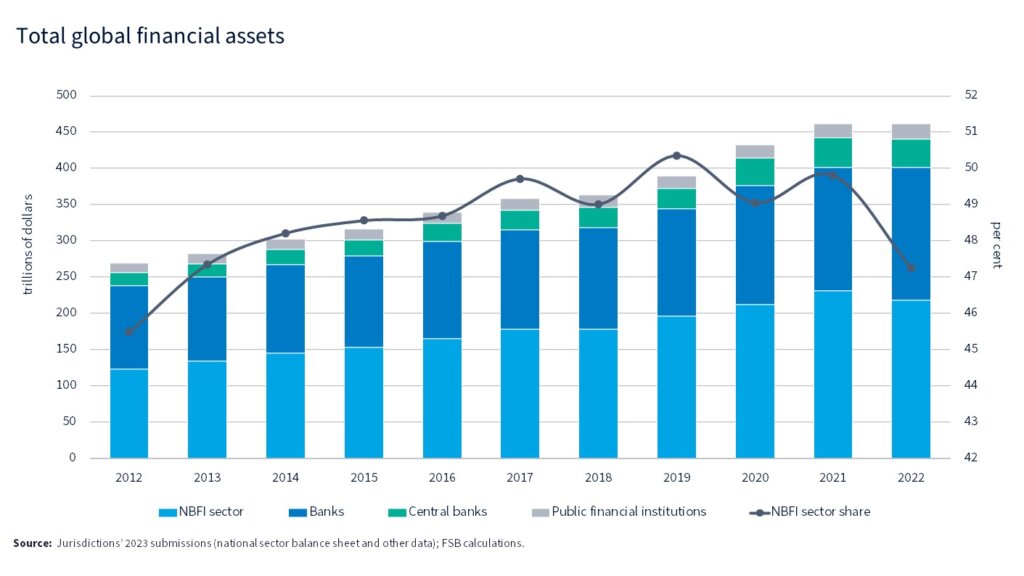How NBFIs can prepare for closer regulatory oversight
Non-bank financial intermediaries (NBFIs), colloquially referred to as “shadow banks”, are pivotal constituents of the global financial ecosystem, encompassing entities such as insurers, hedge funds, and pension funds. In the aftermath of the 2008 financial crisis, this sector has witnessed considerable expansion, with tighter regulations predominantly targeting large commercial banks and mortgage lenders, thereby leaving private funds relatively unscathed.
In 2022, NBFIs were responsible for nearly half of the world’s financial assets, playing an important role in the real economy and global capital movements. Nevertheless, they are not impervious to risk, particularly in the face of volatile market conditions. Incidents such as the Archegos collapse have reignited the debate surrounding contagion risk among regulators and professionals within the investment industry.
The investment sector is exploring ways to address escalating demands for transparency and supplementary regulation. A more refined compliance approach, leveraging precise real-time data monitoring and analysis, could potentially aid NBFIs in managing the intensified scrutiny.
2023 Total Assets + NBFI sector share (uri.sh)
US spearheads efforts to rein in NFBI risks
Regulatory attention has been directed towards open-end funds (OEFs), redemption and liquidity mismatches, money market funds (MMFs), and derivatives central clearing counterparties (CCPs). Recent events such as the global pandemic, the conflict in Ukraine, fluctuations in the crypto market, and the regional banking crisis in the US have underscored the system’s vulnerabilities.
The United States has been at the forefront of regulatory efforts to manage NFBI risks, with the Securities and Exchange Commission (SEC) introducing rules in August to fortify the regulation of private fund advisors. These rules pose significant cost challenges for asset managers, particularly smaller firms that continue to rely on disjointed manual processes.
Despite these concerns, no major global changes for NBFIs are foreseen in the near future. The preferred strategy is likely to be gradual improvements, with NBFIs’ technology investments to tackle the aforementioned challenges playing a crucial role.
To handle further regulatory changes, asset managers must exhibit flexibility. Implementing solutions that integrate smoothly into existing technology infrastructures and provide real-time trading oversight can help meet compliance requirements. Cloud-based platforms may prove to be the most effective, particularly for smaller firms.
2023 OASB private fund advisor rules
Preferential treatment (for example, “side letters”)
Restricted activities
Quarterly statements
Annual audit
Adviser-led secondaries
Recordkeeping
Compliance policy annual review
2023 OASB Private Fund Advisor Rules Chart (sec.gov)
NBFIs must consider digital transformation
As market instability persists, NBFIs are likely to remain in the spotlight as regulators seek a strategy that safeguards the market from systemic risk without stifling growth. In the interim, NBFIs investing in suitable automation and data technologies to overhaul risk management and compliance practices may be the most effective way to ensure success and enhance resilience in the global financial system.
The regulatory landscape is evolving, with the US and Europe moving towards increased oversight and disclosure requirements. The International Organization of Securities Commissions (IOSCO) and the Financial Stability Board are developing policy outcomes that could impact a wide range of market participants.
The compliance burden is further compounded by the complexity of ESG regulation and data standardization challenges. There are difficulties in sourcing data, especially for private assets, and the challenge of prioritizing different regulatory requirements without making errors.
The role of technology in meeting these challenges is critical. It’s important to have a carefully considered plan for digital transformation, integrating technology teams throughout the organization, and keeping on eye on developments. And there is the potential of AI as a tool to solve problems, provided its use is well thought out and tied to clear use cases.
It’s imperative for firms to actively monitor regulatory changes and be ready to react quickly. They need to be flexible and should avoid relying on manual controls and legacy systems, which could lead to high costs and delays in responding to new regulations.
Don't miss out
Subscribe to our blog to stay up to date on industry trends and technology innovations.






